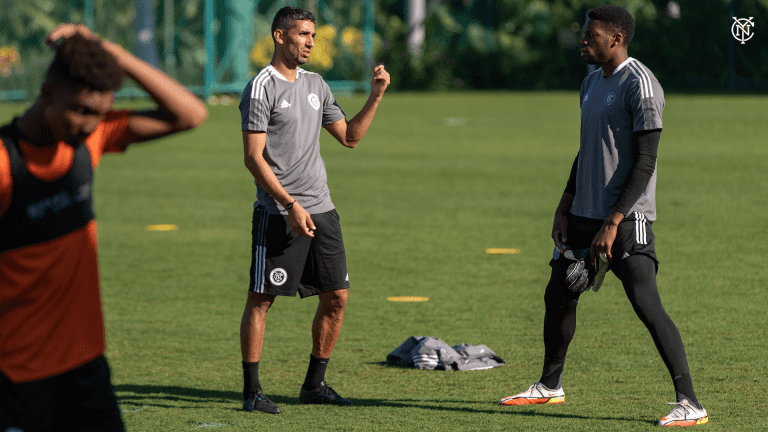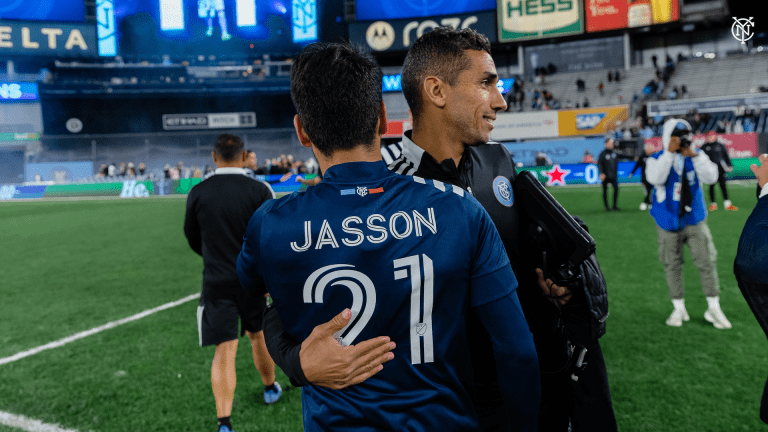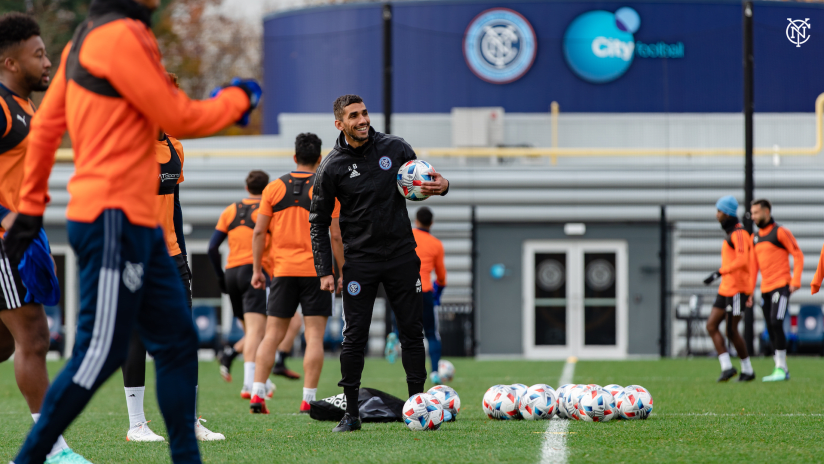In Orangeburg, New York, A little under 23 miles north of central Manhattan, a soccer ball zips across a manicured field.
You’d be forgiven for thinking the ball is on a string as it pinballs from player to player; the sound of leather hitting leather as encouragement echoes around them from the coaching staff. The intensity radiates outward to those spectating – regardless of whether it’s the athletic drills or technical work with the ball.
“The training culture has improved massively since Ronny arrived,” Assistant Coach Mehdi Ballouchy said Monday. “You can show up to any one of the sessions, and everything is super competitive. Players who may not start have the level to start, this makes for really good sessions, this prepares them best when their name is called”
“It almost makes the games easier - the tempo is high all week so come game days it almost feels like just another day. You can only do that when you have this many players who are close to the level of the game. Our squad is not 13/14 players and then a drop I think anyone can jump in and easily do a job.”
Breeding a culture like that takes time. One of the central tenants in that development has been an equal voice. There is no installed hierarchy in this squad, whether among players or coaches, but rather a cumulative effort to reach the eventual decision.
“Whether its scouting or training sessions or game plans, it is all talked through amongst the coaching staff. Of course Ronny sits with the ultimate decisions but there is a platform for everyone to be heard and share their opinion.”

One of the more challenging aspects for a coach can be keeping those outside of the starting XI engaged. Soccer players want to play. The emergence of MLS Next Pro and specifically NYCFC II has helped manage that situation alongside clear communication to individuals.
“There’s a lot of communication between the first and the second team,” he explained. “We see them every day, they train right across the street, there’s a smaller group that’s involved with us, that’s up and down, depending on the training sessions. I play a role in between the two and I keep contact with the players in and out. I go to the home games, I try to watch the away games, to see who needs to be up and what level everyone is playing at.”
The group that Ballouchy is referencing have added necessary depth to the roster. While an asset on paper, they also bring the exuberance of youth and other intangible qualities he’s keen to acknowledge.
“Humility,” Ballouchy said definitively. “As younger players they have to show up with the right attitude. Be open to learn and give everything first then their talent takes over. Setting the example in terms of energy and being competitive every day but also have the ability to take on information and apply it.”

One such example of their dedication arrived this past weekend. Andres Jasson, a player adjusting to his role as a right-back, embodied the aforementioned culture and hunger to get better when he stepped in for NYCFC II at Belson Stadium against Chicago Fire II in a bid to claim more minutes and an opportunity to refine his game.
Fast forward 24 hours, he is but a 15-minute drive away at Citi Field, entering the first team game as a late substitute during a 1-0 win against Chicago Fire.
“These guys want to play, and they want to get better,” he said. “There are few players who are really good examples of how to be professional, how to be in between the first and second team rotations. They’re very hungry to show what they can do.”
Several of those players may be presented with their next opportunity on Wednesday night in the Lamar Hunt U.S. Open Cup against New England Revolution. A deep squad competing in several competitions gives ample chances for those wanting to prove themselves – the rich reward for diligence up in Orangeburg.
Ronny Deila and his staff have helped illuminate a path toward the goal of success and development; in return, these players have chosen to take a step toward it each day.







